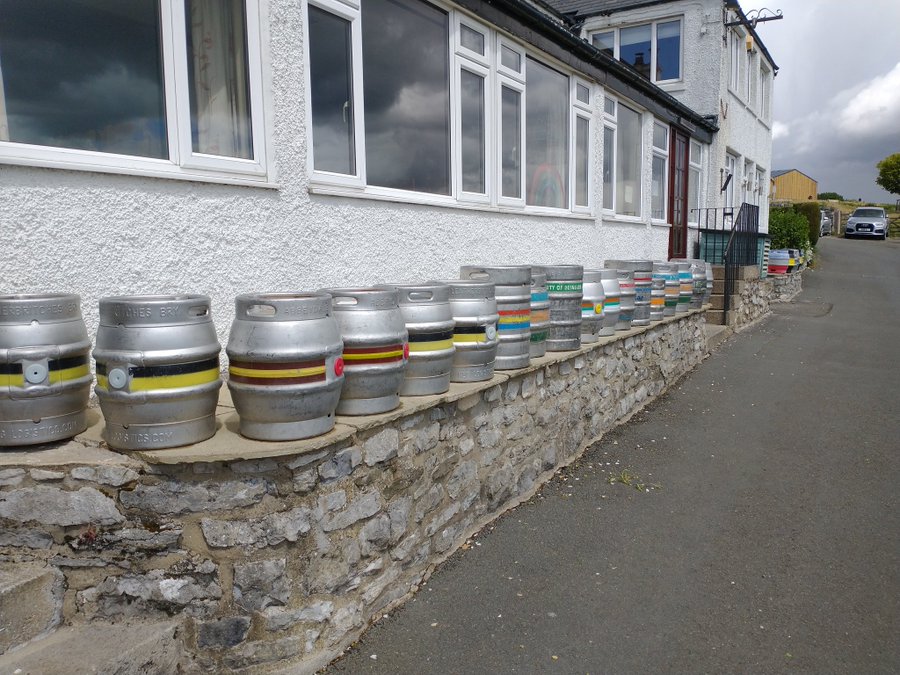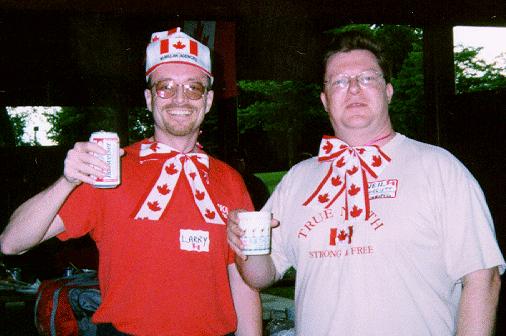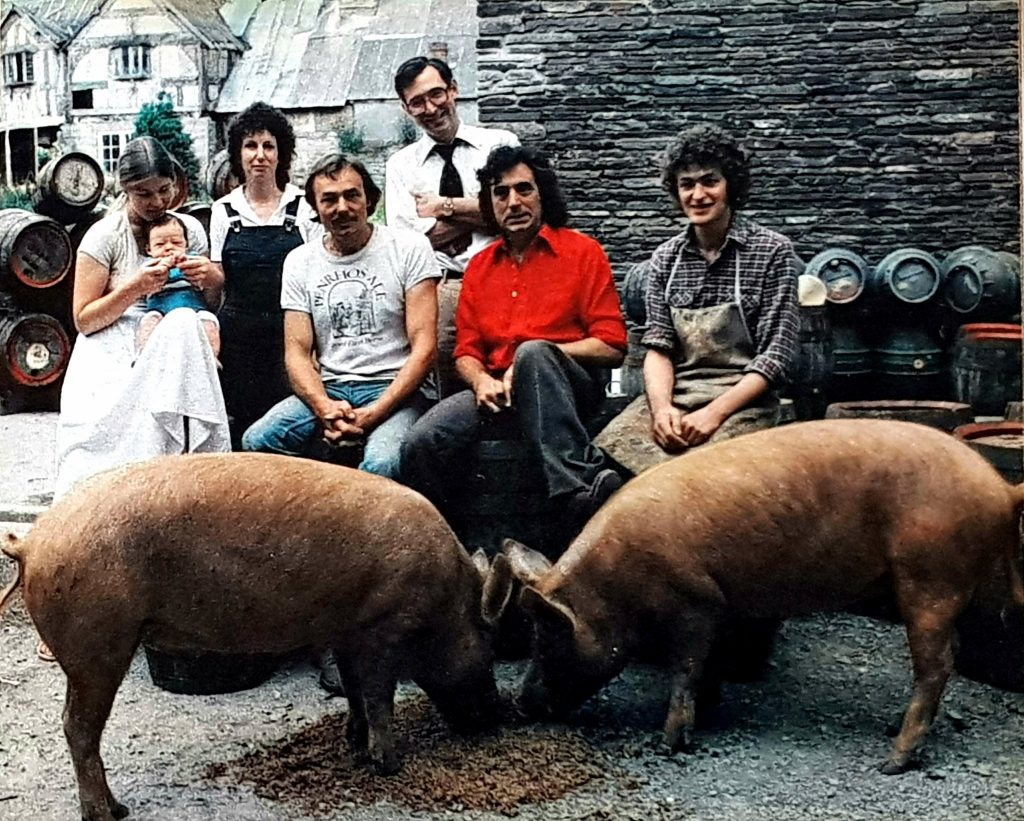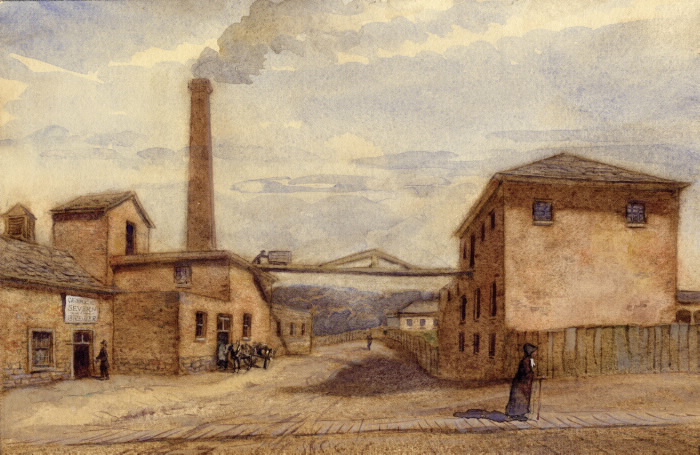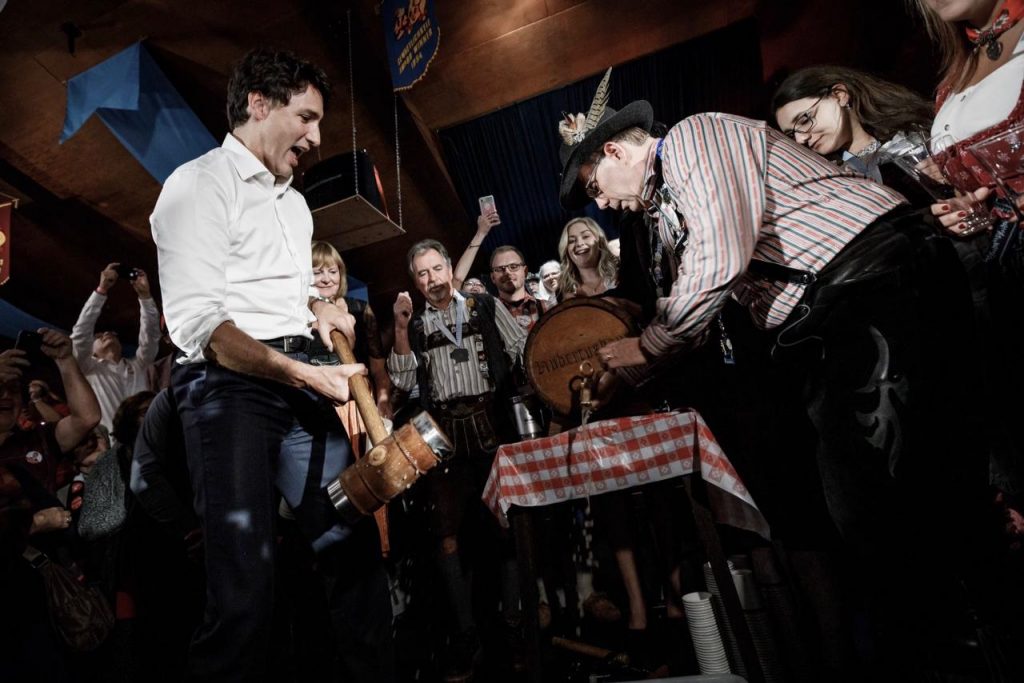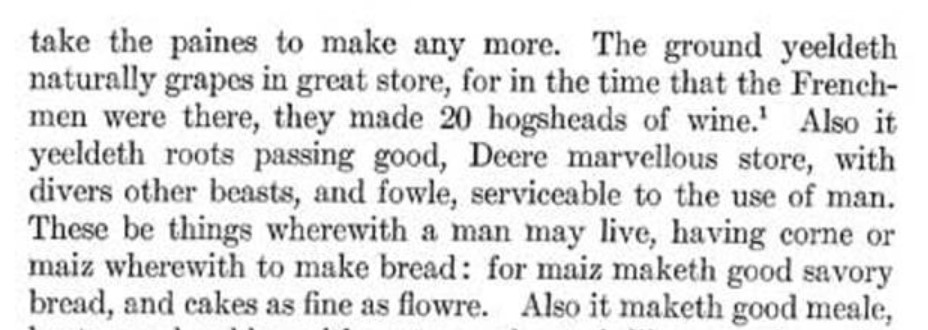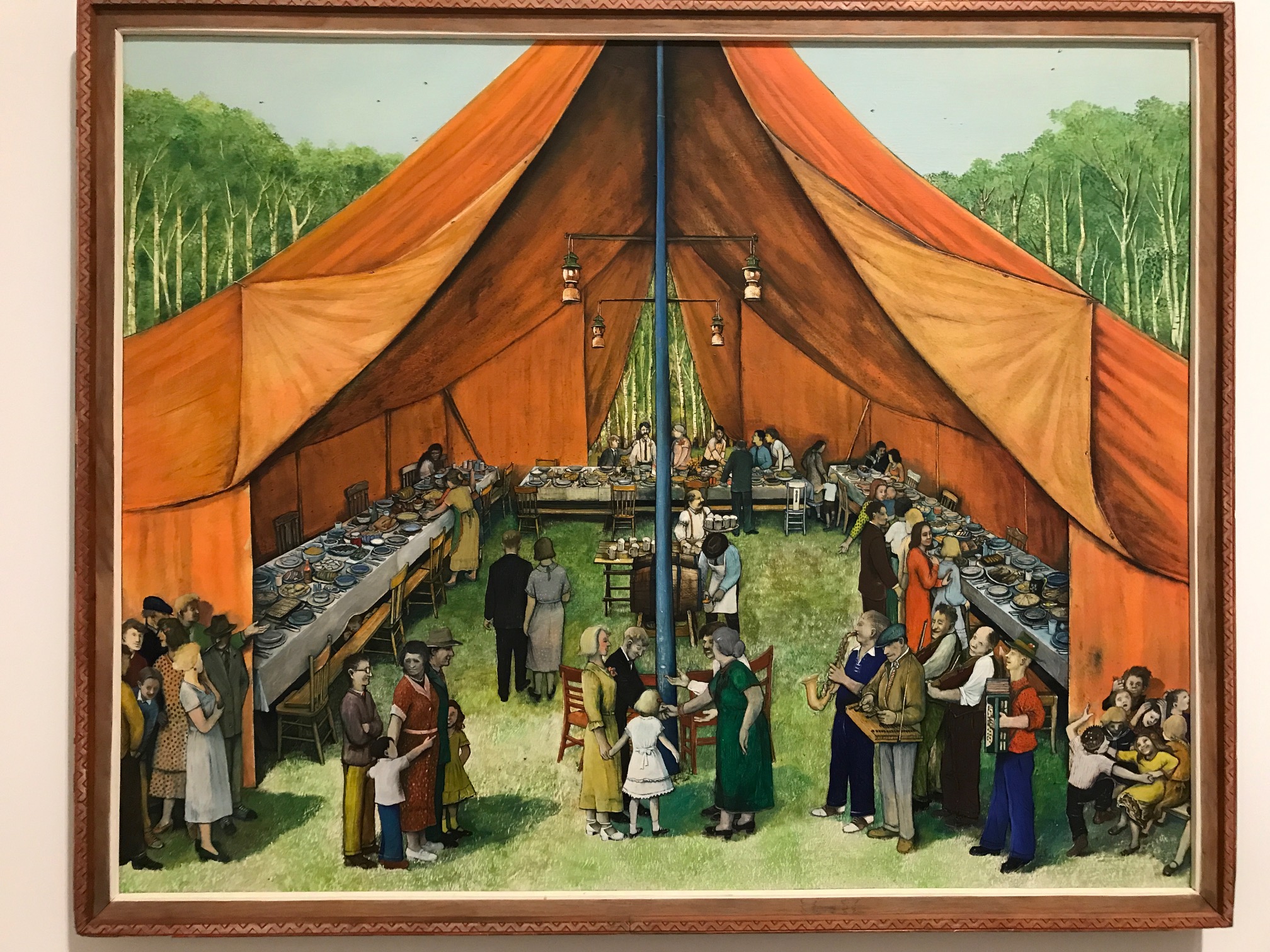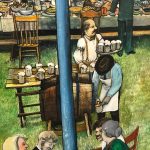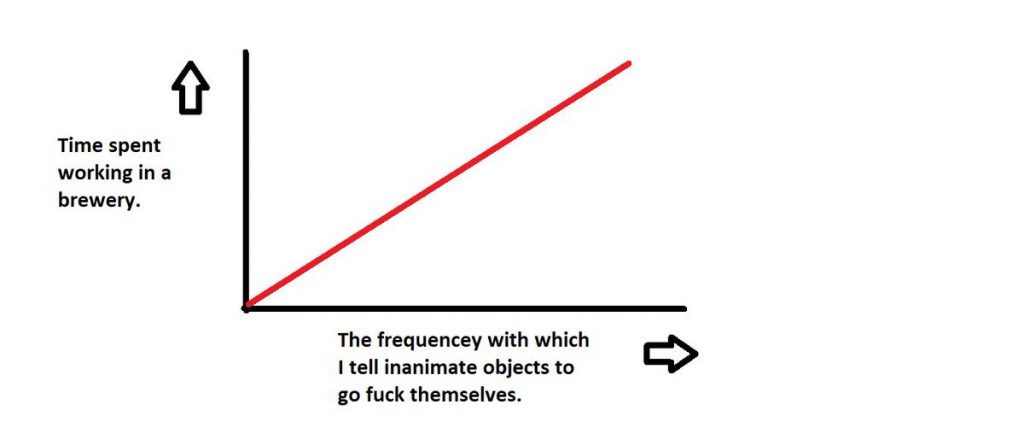And what a Thursday! The last of Donald Trump’s pre-incarceration period!!! Days to go… unless he drops the big one and we all fry. That would be typical, wouldn’t it. As soon as you think you are getting rid of a fifth-rate loser like Donnie T, he drops the big one and we all fry. I shall miss things. As in all things, sure, but in particular the sort of unsmarmy positive stuff that slips through all the smarmy positive stuff about good beer, like that image above from The Wicking Man as well as his accompanying message:
I’m sure many have had difficult times in lockdown and like me have been lifted by good people on Twitter. Many thanks to my #pubtwitter friends. Your tweets and blogs have made me smile and I look forward to the days when we can share our pub trips again.
The Tand wrote a bummer of a post about the perils Welsh icon Brains Brewery faces in these uncertain times:
So what has happened? In short, Covid-19 has happened. Wales has been particularly hard hit by restrictions during the coronavirus pandemic causing “significant financial pressure” to Brains. The company had already concentrated business on a core number of around 160 pubs with the remaining 40 or so being closed or sold off in March 2020. Clearly this wasn’t enough to stave off problems, as this was followed by an announcement before Christmas that rival pub chain Marston’s was to take over on 25-year lease, 156 Brains pubs in a bid to save 1,300 jobs. The deal includes a supply agreement to continue the availability of Brains brands in the pubs, which will be leased to Marston’s at an annual rent of £5.5 million. Brain’s managed houses will also be run by Marston’s.
And similarly Jeff wrote about the death of Portland Brewing Company, an early participant in that area’s scene, offering us basically an obituary written by an old friend:
On the Friday afternoon of January 8th, Portland Brewing put out a short note announcing that, after a 35-year run, they were winding down all operations. It was a strangely subdued note given the brewery’s historical significance. One of the founding quartet of Portland breweries that started putting out beer between late 1984 and 1986, it played a substantial role in laying the foundation that would place beer at the center of the city’s identity by the early 1990s.
Going back further, Jeremy Irons as Wooster advertising a sherry of a sort in the 1970s. Fabulous.
Canadian author Anne Theriault spotted an important moment in 18th century English brewing culture the other day:
Because I am twelve years old, I wish to read more about the 18th century Farting Club in Cripplegate, where members “meet once a Week to poyson the Neighbourhood, and with their Noisy Crepitations attempt to outfart one another.” Truly the past is a foreign etc…
Careful readers will recall that Cripplegate was one of the great brewing areas of London for hundreds of years. Theriault linked to her source, Geri Walton, who had shared further detail including this:
To determine a winner, stewards acted as judges and new stewards were chosen quarterly. The stewards also resolved any disputes that arose “between the Buttocks of the odoriferous Assembly.”[7] Furthermore, to ensure the competitors did not cheat, in a nearby room a bespectacled Alms-woman sat. This elderly woman’s job was to check the underwear of participants: If “any member was suspected of Brewers Miscarriage, he was presently sent in to be examined by the Matron, who after searching his Breeches, and narrowly inspecting the hind Lappet of his Shirt … made her Report accordingly.”[8]
The fact that there were 21 footnotes below the story is in itself wonderful.
Along the same lines and following up on their 2011 false claim of inventing the beer photo contest, US brewery Founders found time to commit a form of hari kari this past week. Perhaps it was the photoshopped image of their flag as the Battle of Congress last week but their lost their social media marbles by banning everyone on the planet who mentioned them – well, who mentioned their lack of interest in living in the 21st (and perhaps even the 2oth) century. It got so fun that folk like me baited them just to get blocked on Twitter but then all that happened was this:
Funny thing. That blocking strategy rolled out by Founders this weekend? Search for their Twitter handle as any prospective new customer might and you find this long list of folk very unhappy with you. Meaning @foundersbrewing decided to trash their brand
It’s true. This is how that works. Someone woke up and stopped all the blocking by Tuesday. Dumbasses.
Continuing from last week, Mark Solomon has posted again on his new blog, this time about his project Indigenous Brew Day:
I do worry about my alcohol consumption, I would be lying if I told you I don’t think often about addiction regularly. I do believe I have a healthy relationship with alcohol but I am aware that can change quickly. Although there are many Indigenous peoples who are struggling with addiction, there are many that have a healthy relationship with alcohol. I want to tell that story, and turn around the misconceptions about Indigenous people and alcohol. Indigenous Brew Day is a great start in changing misconceptions.
ATJ wrote about missing pubs behind a paywall so I never got to read it.
The Beer Nut shared thoughts on one of his nation’s character flaws when it comes to good beer:
This beer deserves to sell in quantity but I fear that the mainstream stout drinkers are too set in their ways to switch, while the craft-curious have too much choice of other beers in more fashionable styles with arty labels to bother with this oulfellas’ stout which isn’t even in a can. The difficulty in getting Irish people to drink stouts is our beer scene’s principal national tragedy. And if you agree with me to any extent about that, make sure you get yourself some of this.
Further odd division was fomented by those who would control who should speak and what should be spoken when it comes to Dry January… oddly called Dry Feb here in Canada. “Keep it to yourself” v “if you’re doing Dry Jan and you’re sharing your experience keep it up” and see also this yet this but also this. I expect you can figure out where I sit on the question.
Kate Bernot has noted that the SCOTUS has declined to hear the case in Lebamoff v. Whitmer, a court case about widening interstate alcohol shipping laws. “Certiorari Denied!” is all they said. So no actual ruling with interesting chat to read unlike the similarly framed case before Canada’s top court in 2018. SCOTUSblog has framed the issues in the case this way:
Whether a state liquor law that allows in-state retailers to ship wine directly to consumers, but prohibits out-of-state retailers from doing so, is invalid under the nondiscrimination principle of the commerce clause or is a valid exercise of the state’s 21st amendment authority to regulate the sale of alcoholic beverages within its borders.
And finally, in other semi-regulatory news, it appears the US Brewers Association may be facing challenging times, too, as they have announced a temporary free membership offer:
Not a member but want to join? To ensure no breweries are missing updates due to financial barriers, we’re offering nonmember breweries a temporary membership free of charge. Reach out to our membership team if you’re interested.
Jings. Well, that is that for now. Enjoy the reassertion of US democracy over the next week. As you do, for more good reading check out the weekly updates from Boak and Bailey, back now mostly every Saturday, plus more at the OCBG Podcast on Tuesday and sometimes on a Friday posts at The Fizz as well. We have a new entry from the DaftAboutCraft podcast. And sign up for Katie’s weekly newsletter, The Gulp, too. Plus the venerable Full Pint podcast. And Fermentation Radio with Emma Inch. There’s the AfroBeerChick podcast as well! And also look at Brewsround and Cabin Fever. And Ben has his own podcast, Beer and Badword. And remember BeerEdge, too.

